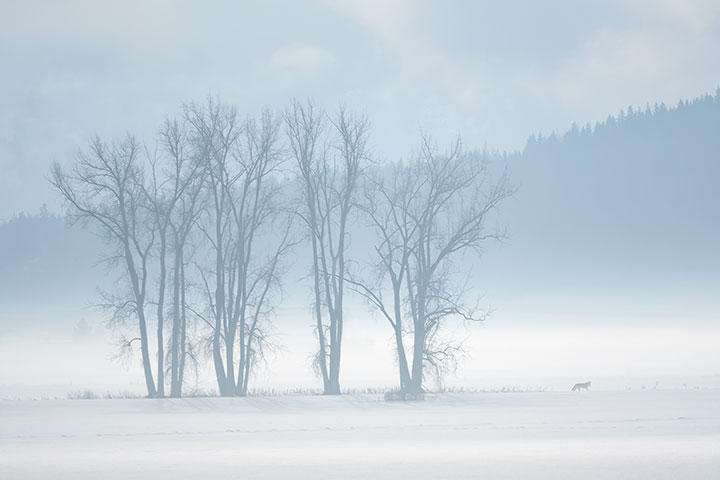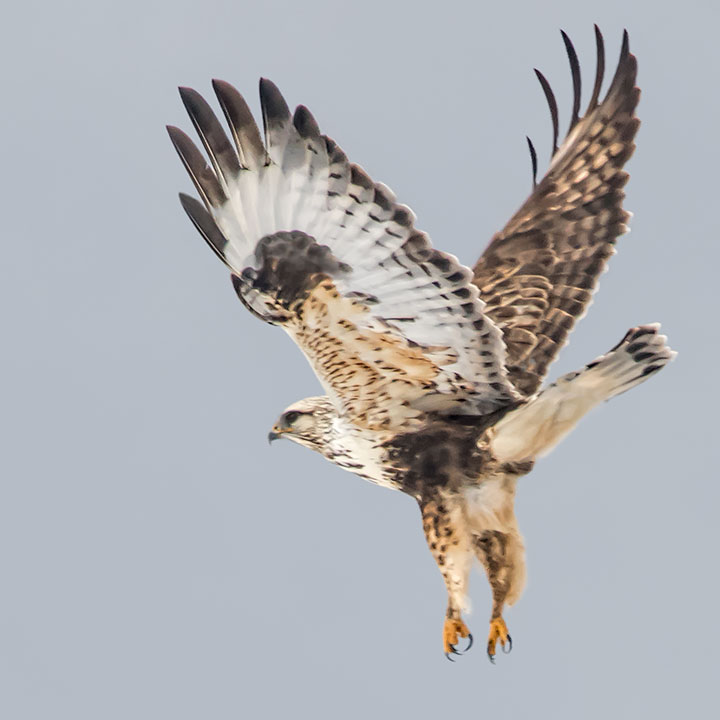By the end of the 1930s, the broad flood plains at the southern end of the Lake had been dyked and grain cultivation had began. Grain attracts rodents; rodents attract predators; predators attract naturalists. (Of course, it is also appealing that the valley is a migratory bird route.)
A January visit is often rich in coyotes and raptors. This week, snow hid rodents and so predators seemed sparse. However, there were enough to make it interesting and below are three. Owls will be treated in another posting.
A coyote roams the Creston Flats in the fog as it hunts for rodents under the snow.

The Red-tailed Hawk is a staple year round. While it has a variable plumage, the dark patagial bars on the inner front edge of the underwings are important distinguishing features.

Sightings of a Rough-legged Hawk are a major reason to visit the Creston Flats in January. This raptor spends its summer in the Arctic breeding and feeding on lemmings. Only in the winter does it visit southern Canada. Distinguishing features are the dark patches at the bends of the wings.

Amazing photo of the red-tailed hawk…and I am off to find a dictionary.
We are told, as photographers, to leave room in front of the subject, so that they can move into it, but some, as the coyote, need to be shown THIS way, looking way beyond. Thank you.
Margo, I am aware of those guidelines. Yet in the end, the rule is: do what looks right. For me, a scene dominated by fog-shrouded trees on the left looked right as a contrast to the ever-so-tiny coyote departing to the right.
And yes, I was pleased with the Red-tailed Hawk. Many pictures were taken to get that one shot.
Creston Flats in the fog — ethereal and worth framing.
Thanks
Wendy